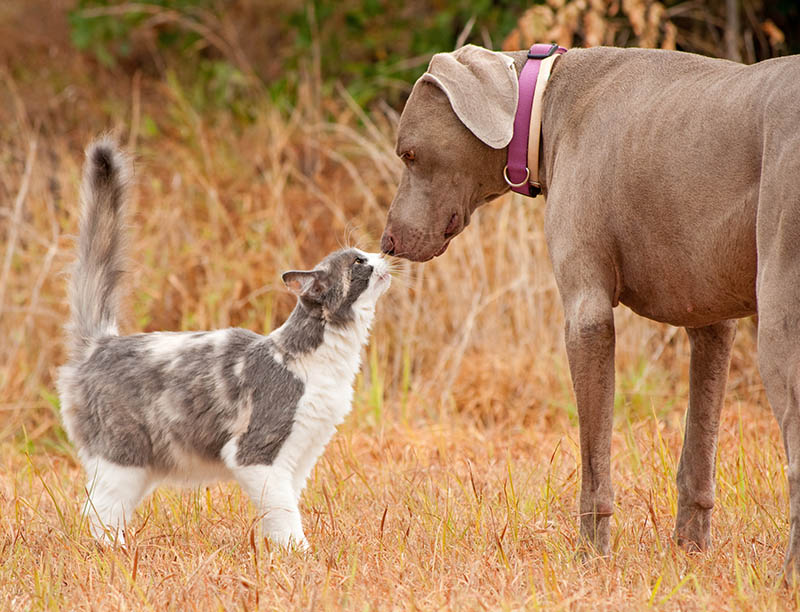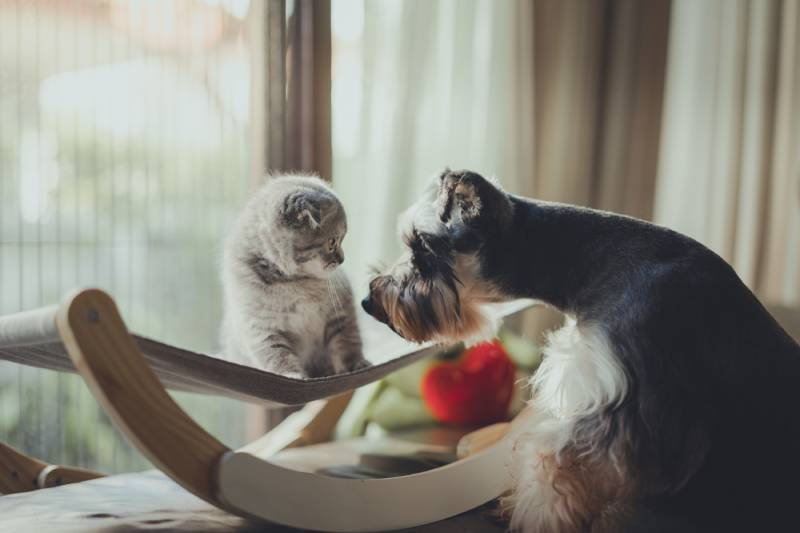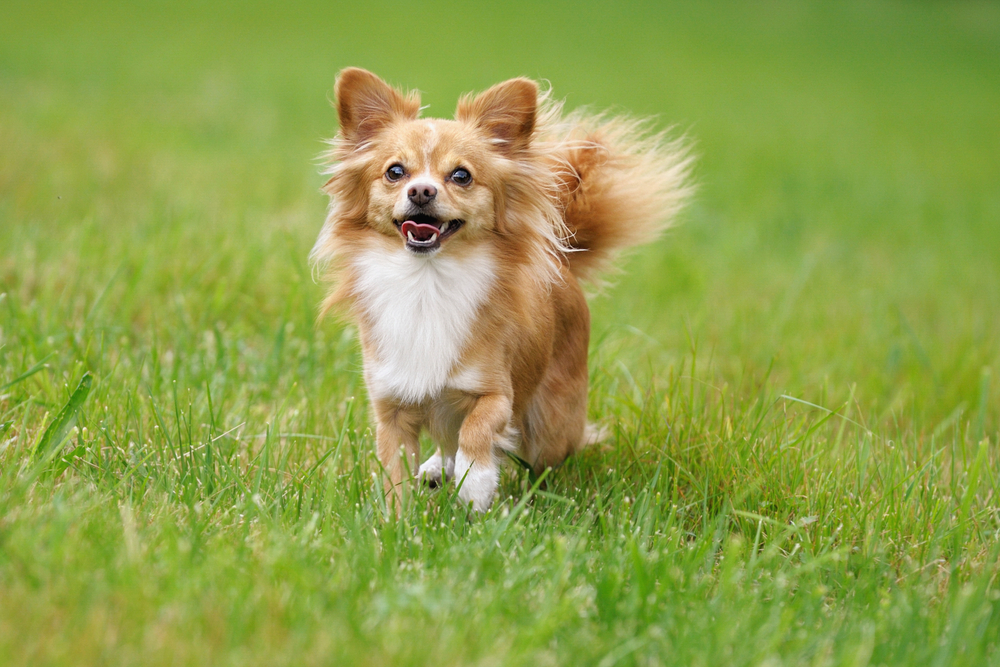Dogs know that cats are a different species to them, primarily because of their smell. They also recognize that cats have different body language to themselves and they even recognize that cats are not the same as people. Whether a dog gets on with cats or not will depend on the individual and breed characteristics of both animals, as well as how well early introductions went.
Read on to learn the different factors that affect whether cats and dogs get along and how dogs really see cats.
Dogs Can See Cats As Prey
Dogs can see cats as prey, especially hunting breeds. Hunting dogs have been bred specifically to chase after prey, either to bring it down themselves or to assist their handler with taking down their quarry. It is even possible for a dog to get along with cats in its household but to still view other cats as being potential prey.

Both Can Be Territorial
Dogs and cats can both be territorial. This means that they may want to look after their own territory while attempting to protect their food and water. Some breeds can also be protective or even territorial over their humans. You can work with your dog and cat to ensure that they don’t become aggressive with one another over possessions, but it can take time and some pets may never be entirely comfortable with the other around their belongings.
They Speak Different Languages
Cats and dogs do speak different languages and neither instinctively knows everything that the other is trying to relay. A cat’s instinct is to treat a dog’s bark as a threat. It will either stand its ground or run for cover. However, some dogs bark for a variety of reasons. Initially, your cat may not recognize this but, in time, it will get used to your dog’s interactions.
They Can Become Very Close
Dogs and cats can form very close bonds with one another. This is especially true of pets that are introduced when they are puppies and kittens, but it can also be true of older cats and dogs.

Gradual Introductions Work Best
Whether you are introducing a puppy and kitten or an older dog and cat, you should make the introduction slowly. Let the cat have somewhere to run to that the dog can’t reach and don’t be tempted to just throw them in a room and hope they resolve their issues. It can take a long time for a cat and dog to gel, and it is possible that they will never become best buddies.
If you can get them to share the same space without barking and hissing at one another, and both pets are eating, that is great progress.
How Do Dogs Feel About Cats?
Dogs can see cats as prey, although this isn’t necessarily true of all dogs. Some dog breeds, especially those raised as companion pets or for purposes other than hunting, may not view any cat in this way. Dogs that are introduced to cats when they are young are less likely to view them as prey, too.
Do Dogs Understand Cats?
Instinctively, dogs do not fully understand cats. They tend to know that if a cat scratches them on the nose, it means that they were getting too close, but they don’t fully understand tail raises and other body language cues given by cats. Over time, though, your dog will learn to read some of the signs, in the same way they learn commands from their humans and know how we want them to behave in certain situations.

Final Thoughts
Dogs and cats can get along very well, especially if both are well-socialized and if they were introduced at a young age. However, dogs do know that cats are not dogs, and vice versa. Initially, this means that the two species may not really understand the other, but this is where socialization and gradual introductions pay dividends.
Be calm when making introductions and always make sure your cat has a place it can escape to if it feels threatened or overwhelmed.
Featured Image Credit: SUWAPARN JARUCHAISITTIKUL, Shutterstock













